
“It was the best of times, it was the worst of times, it was the age of wisdom, it was the age of foolishness, it was the epoch of belief, it was the epoch of incredulity, it was the season of light, it was the season of darkness, it was the spring of hope, it was the winter of despair.” Says Charles Dickens in his timeless story, ‘A Tale of Two Cities’. Dickens’ description is especially pertinent to these times, I feel. We are pushed into an unfathomable era in which most are struggling to make sense of day to day occurrences and make ends meet. Then there are a few who are fortunate enough to be able to ponder on not just of their means of survival but their meaning of existence. Art, at a time like this, could ‘speak’ to the latter but most probably not to the former group. Nevertheless in a rapidly changing reality, Art too has hastened its evolution. The audiences are unable to visit exhibitions and as such online platforms are replacing the conventional galleries.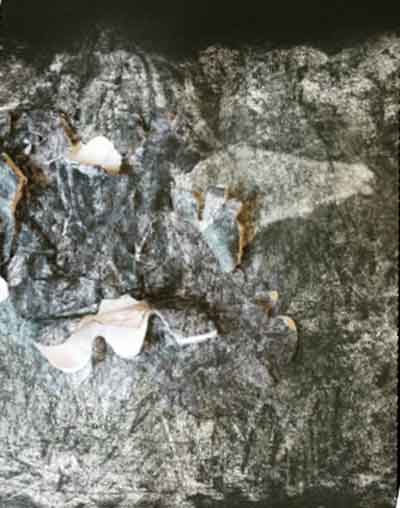
In a context such as this, Saskia Fernando Gallery in Colombo would be showcasing the work of the renowned British – Sri Lankan artist Chudamani Clowes. This interview was conducted virtually with the intention of exploring her artistic voice.
Q: How did you develop an interest in art and what was the nature of your artistic journey?
A: I was always very passionate about art and was very keen on drawing and ceramics. I trained as a biologist and then worked at the National Gallery in London. Then I became a teacher and they made me the head of art. At the same time I was offered a place to study Fine Art at Central St.Martins. I went to a very good school that had a super art department and I won competitions which gave me encouragement to pursue art as a career.
Nature really inspires me. I draw a lot of analogical links with animals from the sea and migration. As a trained biologist I spent a lot of time on animal behaviour.
Memories and artefacts and archives are really important to me. I am fascinated and hooked on the British Museums Ethnographic department. I used to spend a lot of time at the Museum of Mankind.
The news and my childhood memories all play a part in inspiring me. Stories in the newspapers and radio programs trigger something off in me.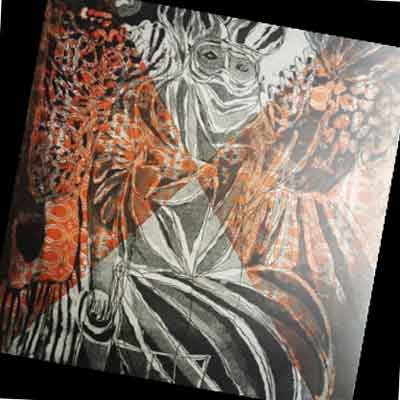
Q: Who were the teachers, renowned artists who inspired you and why? How did their work influence your thinking?
A: My teachers were amazing I was lucky to be taught at Central St Martins by Sonya Boyce, Fraizal Abdullah and great artists like Yinkashonibare who came to give us lectures. Black British artists had a profound effect on me in how they dealt with the post colonial subject matter.
I am very much influenced by Ellen Gallagher, Mark Bradford and Hew Locke.
Q: What is your current status with regard to an artistic career?
A: At the moment I am represented by Saskia Fernando Gallery in Sri Lanka. I show with a few galleries in London like Division of Labour and The Griffin Gallery.
Q: Could you describe your techniques, concept, and theme of the work you are about to exhibit? What are you attempting to communicate to the audience and how is your work connected to the Sri Lankan context?
A: From my work you can see combinations and collages of materials. I try to use materials that have significance to the subject matter like Elephant dung paper or Banana paper. I also like to combine printmaking with ceramics and painting.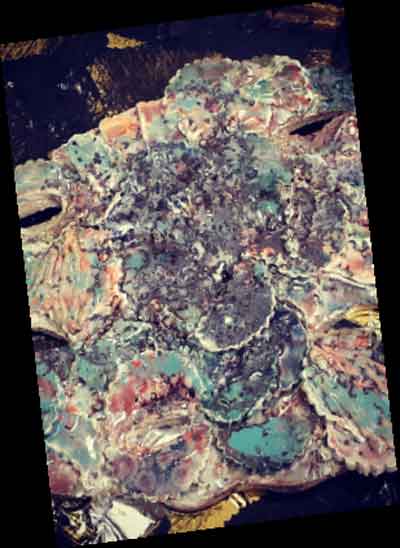
The feel for something in my work is important, smoothness and texture create a better picture for me. I like to use natural materials like linen and clay. I have no restrictions on how and what materials I combine together.
The ability to fail, to make mistakes is vital in making art.
Best things come from failure and also the best inventions. You find that your confidence grows when you find solutions by yourself. Play is very important to explore and play with your imagination.
All my work comes from experimenting with images and drawings: making proto - types and sketches. I spend a lot of time making demos and playing with models.
Then after playing for hours I accidently come across an image or a style I really like. I try to create and conjure up an image of what I want to say and the message I am trying to convey. It’s a visual language you are developing.
I am dealing with Imperialism, memory, identity and migration. I am interested in post colonialism and the impact of empire in a global sense. I use my own experiences of growing up in London, I went to school in Nottinghillgate in London and I found out there were Empire shows held in Shepherds Bush. I realized there were Sri Lankan elephant performers brought to London to live and perform to live audiences about one hundred years ago. They were human zoos. I read a super book called ‘Representation and power’ by Stuart Hall at the same time and I became interested in how the Sri Lankans were shown in the media today. I was fascinated by how I was perceived and the stereotypes that still exist in a post colonial sense
The best memories are of my childhood of growing up in Sri Lanka. My father was a tea planter and we lived in Colombo.
The memories I have always trigger off the start of my art work. Growing up surrounded by tea estates, I remember playing in the garden with a large white object. I later realised it was an elephant skull. I made a link between my childhood memories with the Elephant shows in London. Memories play tricks with you. They never leave you.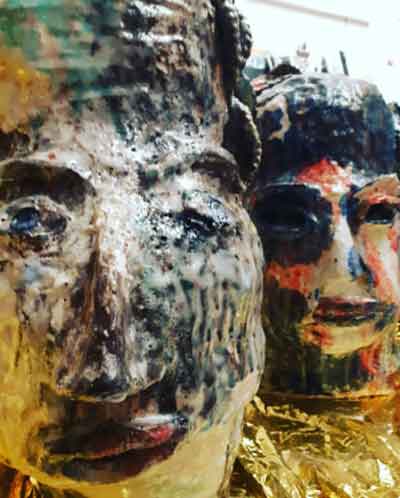
I am trying to grapple with how I am represented and how many stereotypes there are of Asian people. I think it is important to challenge perceptions and highlight power structures in society. Justice and equality are important to me. I know being Sri Lankan coming from a former colony how I have been treated and received in this country.
I am constantly coming across historical documents about Ceylon. I encounter some very strange perspectives, and stereotypes about Sri Lankans. I know I am here in London because of the British Empire.
I realize Globalization is inevitable, the world is becoming a smaller place. We need to trade with each other. I am just apprehensive about migrant workers and how they are treated. I am concerned about how fragile economies are and how reliant they are.
Q: What are the challenges and difficulties you think are significant in the current global context?
A: I am very concerned by the way we treat the environment. There are far too many humans on the planet I think we have issues with population control and how best to sustain life on Earth. We are inevitably exploiting the environmental resources at an alarming rate. We need to recycle a lot more and make longer lasting things not be driven by so much consumerism.
I feel our habitats are in danger and education is very necessary in order to look after it for future generations.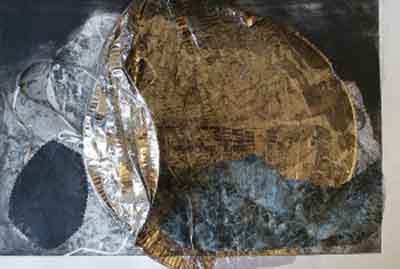
Q: How do you view online platforms and their future?
A: I think this may be the future. There is nothing quite like seeing a piece of work for the resonance it may have and the gut reaction it provokes. I don’t think the impact is there on line but interviews are great.
Q: What are your goals and aspirations as an artist?
A: I think Art does have the power to change the world. It is a vehicle that can change perceptions and a vital part of our wellbeing. We are trying to make sense of the world with Art. It is a vital tool that nourishes us and gives us the confidence to challenge injustices in the world.
